Inside The New York Botanical Garden
rose garden
Posted in Around the Garden, Photography on May 23 2012, by Matt Newman
Just try and find a couturier who can stitch together ruffles like these! The Peggy Rockefeller Rose Garden is once again making a name for itself as spring rounds its way toward summer. More to come later in the day!
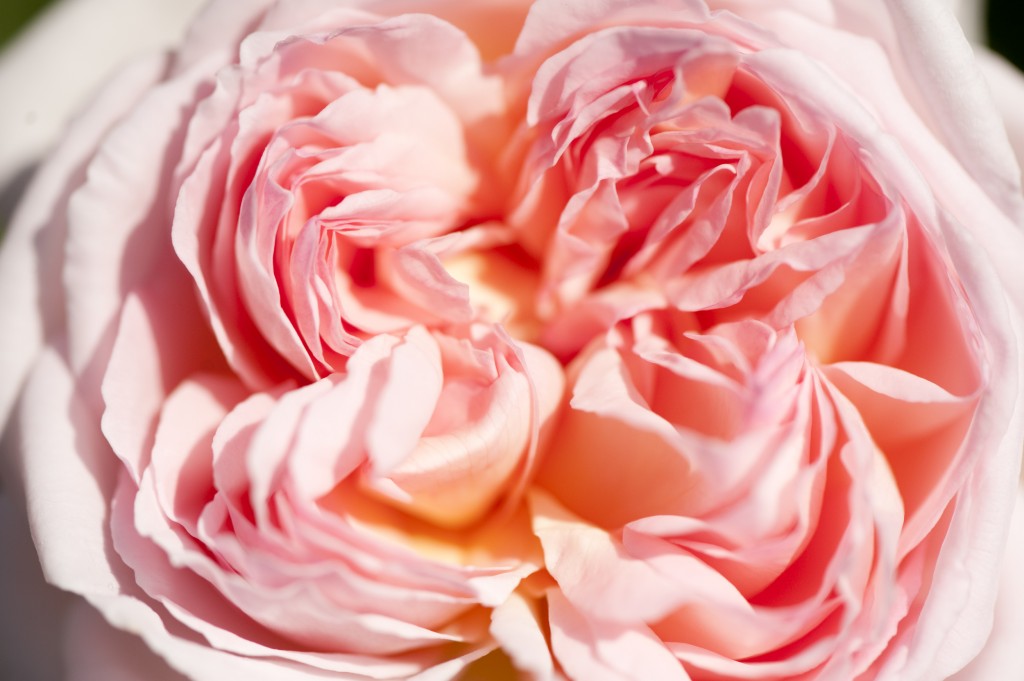
Shrub rose ‘Sharifa Asma’ — Photo by Ivo M. Vermeulen
Posted in Photography on April 7 2011, by Ann Rafalko
Curator Peter Kukielski teaches School of Professional Horticulture students in the Peggy Rockefeller Rose Garden.
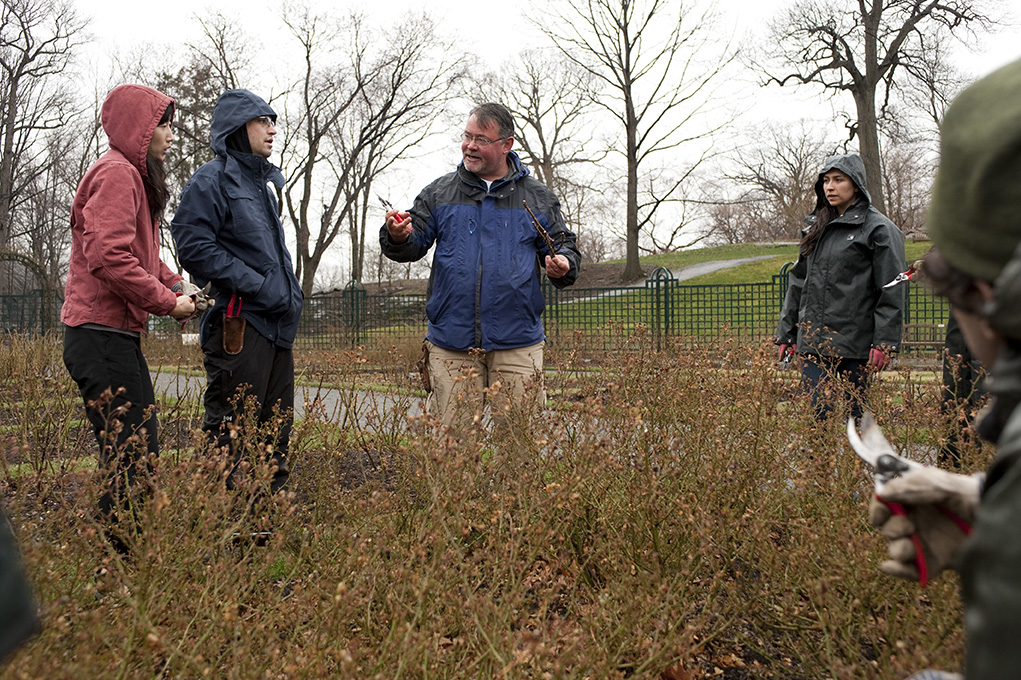
(photo by Ivo M. Vermeulen)
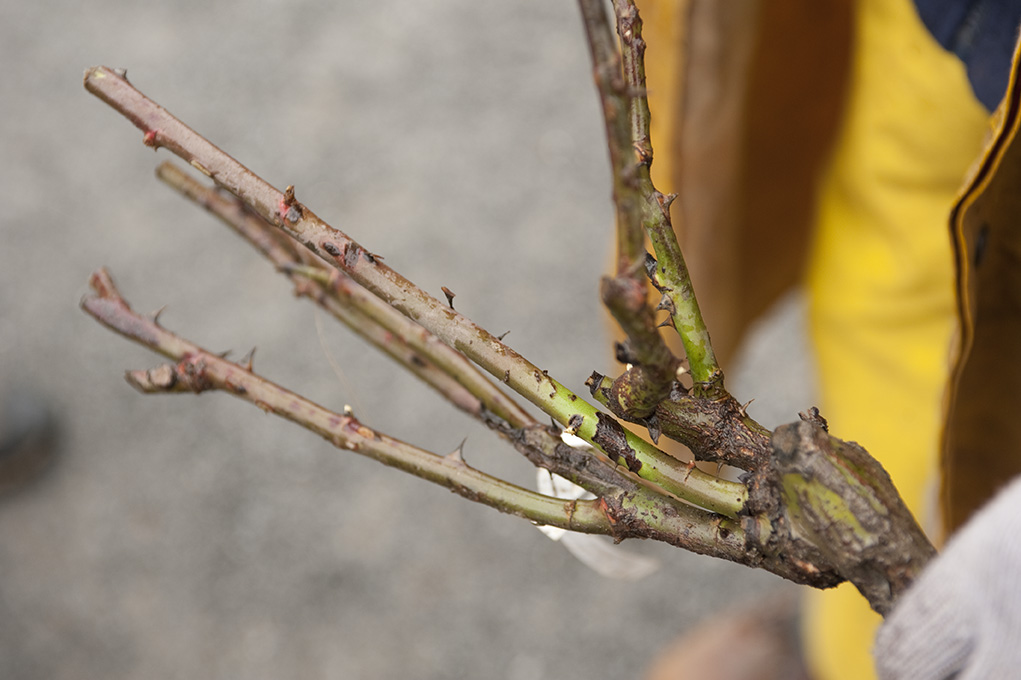
Planting bare root roses in the Peggy Rockefeller Rose Garden (photo by Ivo M. Vermeulen)
Want to plant bare root roses yourself at home? Learn how from Peter himself! Hurry, because the best time for bare root rose planting is almost over in our area (for those of you who purchased a rose in a pot don’t worry — Peter says a potted rose can be planted anytime).
Posted in Gardens and Collections on November 3 2010, by Plant Talk
 |
Peter Kukielski is the Peggy Rockefeller Rose Garden Curator. |
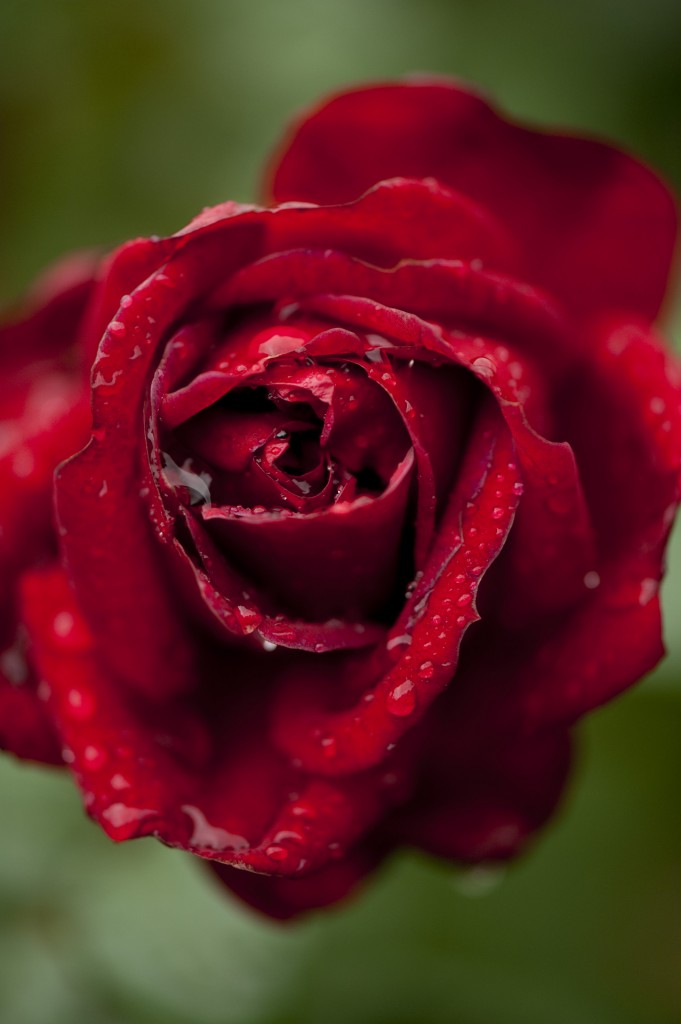 One of the best things about a rose is that it is the longest blooming perennial plant there is. Roses begin blooming in late May and can continue to bloom until the first frost. The Peggy Rockefeller Rose Garden is a perfect example of this and continues to bloom even today–the second day of November! This is amazing considering this year’s peak bloom occurred in the third week of May. ‘Easter Basket,’ a variety that is planted along the main alley of the rose garden and newly planted at the top of the stairs, hasn’t been out of bloom since late spring.
One of the best things about a rose is that it is the longest blooming perennial plant there is. Roses begin blooming in late May and can continue to bloom until the first frost. The Peggy Rockefeller Rose Garden is a perfect example of this and continues to bloom even today–the second day of November! This is amazing considering this year’s peak bloom occurred in the third week of May. ‘Easter Basket,’ a variety that is planted along the main alley of the rose garden and newly planted at the top of the stairs, hasn’t been out of bloom since late spring.
Fall is a wonderful time to stop and smell the roses. The cooler air seems to intensify their fragrance, allowing it to linger in the air. The main entrance to the garden is flanked on either side by an incredible collection of English Roses, which are famous for their scent. Other varieties such as ‘Julia Child,’ ‘Quietness,’ ‘Bolero,’ ‘The McCartney Rose,’ ‘Eternal Flame,’ ‘Mister Lincoln,’ ‘Double Delight’, ‘Tiffany,’ and ‘Marie Louise Marjan’ are all incredibly fragrant, and ‘Queen Mary 2’ smells slightly of bananas!
We're not the only ones that think the Peggy Rockefeller Rose Garden is pretty special. Find out more below.
Posted in Programs and Events on August 25 2010, by Plant Talk
 |
Suzanne Flanagan is Group Tours Coordinator. |
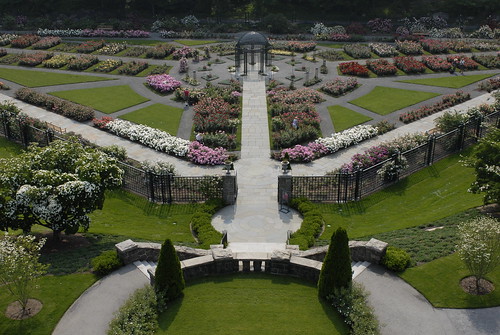 Guided tours give visitors an added boost of knowledge beyond exploring the Garden on one’s own. Each time I’ve embarked on one of our tours, I’ve learned bountiful gardening tips and scientific and historical facts.
Guided tours give visitors an added boost of knowledge beyond exploring the Garden on one’s own. Each time I’ve embarked on one of our tours, I’ve learned bountiful gardening tips and scientific and historical facts.
That’s why I am especially excited and honored that Peter Kukielski, Peggy Rockefeller Rose Garden Curator, has agreed to take groups on a tour of the award-winning, world-renowned Rose Garden during its spectacular fall bloom.
Peter’s passion for roses is inspirational. Over the past two years he and staff have replaced hundreds of roses with disease-resistant varieties, transforming the Rose Garden into one of the most sustainable public rose gardens in the world. Today 3,659 rose plants in 607 varieties thrive there. Earlier this year the Peggy Rockefeller Rose Garden was inducted into the Great Rosarians of the World™ Rose Garden Hall of Fame.
Peter will be available to lead one-hour tours of the Rose Garden on September 16, October 7, or October 14. Tours include a private tram ride to and from the Rose Garden. You don’t have to come with a group, as we are signing up individuals to form groups of at least 15. For more information or to sign up, call Group Tours at 718-817-TOUR (8687) or e-mail grouptours@nybg.org.
Posted in Gardens and Collections on January 26 2010, by Plant Talk
 The Peggy Rockefeller Rose Garden has been named as the 2010 Rose Garden Hall of Fame inductee by the Great Rosarians of the World™ (GROW). In announcing the award, GROW said the selection was based on the recent renovation of the Rose Garden, which has created “a sustainable public garden representing an outstanding collection of historic roses.”
The Peggy Rockefeller Rose Garden has been named as the 2010 Rose Garden Hall of Fame inductee by the Great Rosarians of the World™ (GROW). In announcing the award, GROW said the selection was based on the recent renovation of the Rose Garden, which has created “a sustainable public garden representing an outstanding collection of historic roses.”
“In the world of roses, this is like winning the Best Picture Oscar,” says Peter Kukielski, Curator of the Rose Garden.
To be considered for the award a rose garden must be open to the public, be recognized as having an outstanding design or historical significance, display an outstanding collection or broad display of roses, and/or promote rose growing with educational outreach programs.
The award will be presented at the 5th Annual New York Metropolitan Rose Council Dinner—in June, of course.
Posted in Gardening Tips, Gardens and Collections on September 18 2009, by Plant Talk
Black Spot and Downy Mildew Look Similar but Are Different
 |
Peter Kukielski is the Peggy Rockefeller Rose Garden Curator. |
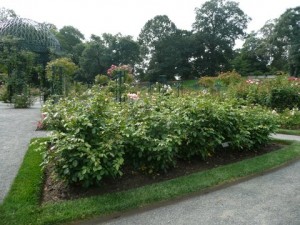 Few flowering plants match the beauty, versatility, or popularity of the rose. Numerous varieties offer a wide range of growth habits and floral colors. With the proper care, hundreds of rose varieties will bloom from early spring through late fall. Although there are many new varieties on the market that are highly disease resistant, some of the older varieties present a challenge, and disease control is critical for maintaining healthy roses.
Few flowering plants match the beauty, versatility, or popularity of the rose. Numerous varieties offer a wide range of growth habits and floral colors. With the proper care, hundreds of rose varieties will bloom from early spring through late fall. Although there are many new varieties on the market that are highly disease resistant, some of the older varieties present a challenge, and disease control is critical for maintaining healthy roses.
I get asked quite often to identify pests and diseases either by e-mail or by visitors to the Rose Garden. This year I got many questions regarding two specific rose diseases that are triggered by excessive humid and/or wet conditions: black spot and downy mildew.
We’ve heard the phrase “a rose is a rose is a rose.” Could one also say “a spot is a spot is a spot”? In regard to roses, the answer is “no.” These two very different types of spots can cause severe damage in different ways.
You can tell the two diseases apart by their symptoms: Black spot has circular spots and starts at the base of the plant and works its way up the plant, while downy mildew has angular spots but attacks the new growth at the top of the bush and works its way down the plant.
Read More
Posted in Gardens and Collections, People on February 19 2009, by Plant Talk
 Carol Capobianco is Editorial Content Manager at The New York Botanical Garden.
Carol Capobianco is Editorial Content Manager at The New York Botanical Garden.
I bumped into Peter Kukielski, Curator of the Peggy Rockefeller Rose Garden, the other day in the hallway—we don’t often see Peter indoors. It was one of the coldest days of the year and Peter’s cheeks were rosy—but so was his outlook for a new rendition of the Rose Garden.
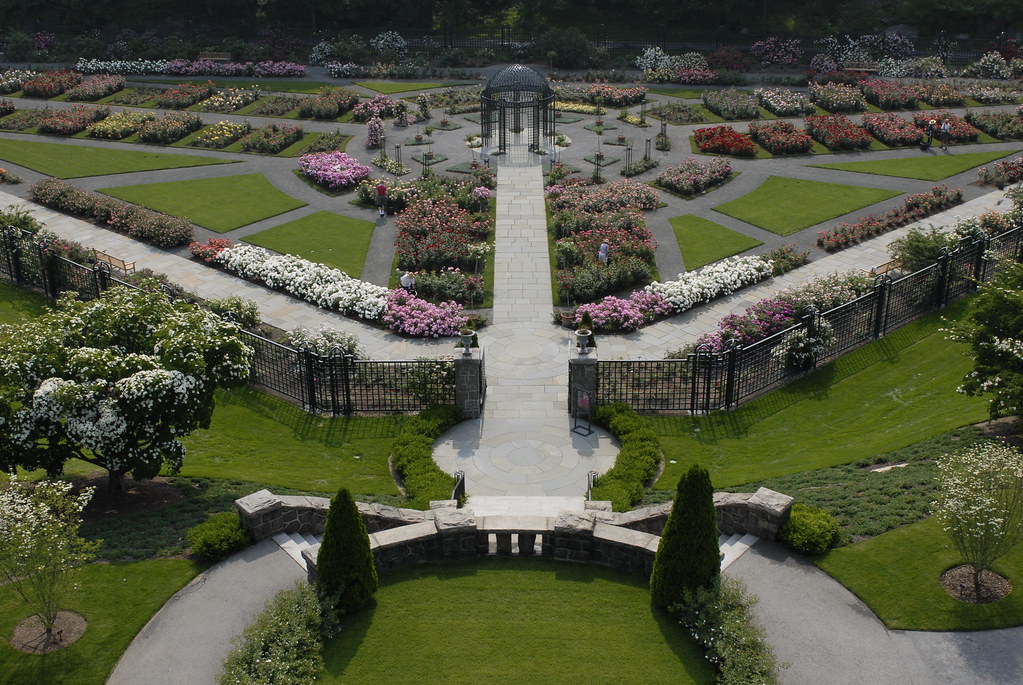 Peter has been working on a multi-year dream to transform his charge into the world’s largest chemically-free, low-maintenance rose garden. A tall order, for sure, since roses have a reputation of being among the most chemically-dependent flowers in existence.
Peter has been working on a multi-year dream to transform his charge into the world’s largest chemically-free, low-maintenance rose garden. A tall order, for sure, since roses have a reputation of being among the most chemically-dependent flowers in existence.
But during these months when our Rose Garden is in its winter stupor, Peter has been scouring the world (virtually, not physically) for the finest disease-resistant varieties in a major step to the conversion. Not only did he find what he was looking for, but all the growers donated the plants. Beginning in March, Peter will oversee the planting of 880 new, hardy roses to replace the more than 1,100 high-maintenance roses removed last fall, about one-third of the Rose Garden’s inventory. The new varieties bloom all season long and are easy to care for.
Peter’s passion for the project, his extensive expertise, and his willingness to experiment add up to an interesting season to come for the Rose Garden. Stay tuned for the announcement of its reopening this spring and be sure to come and visit.











